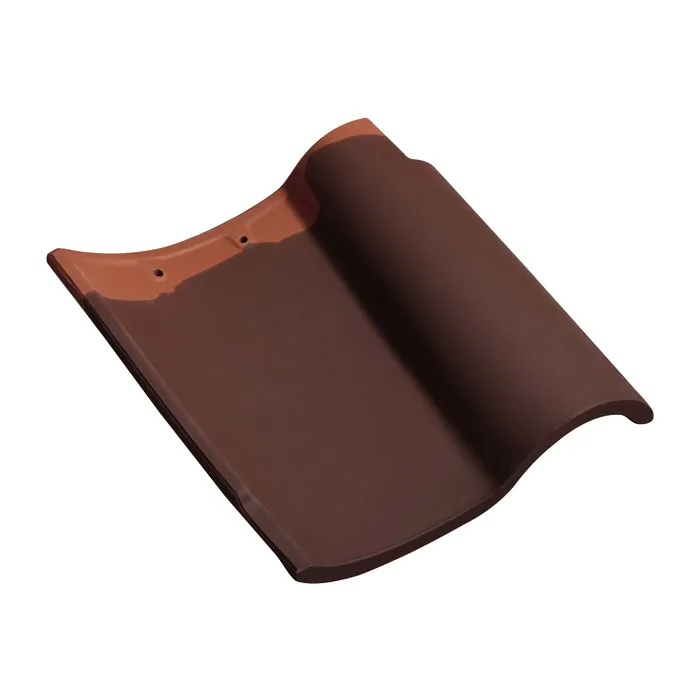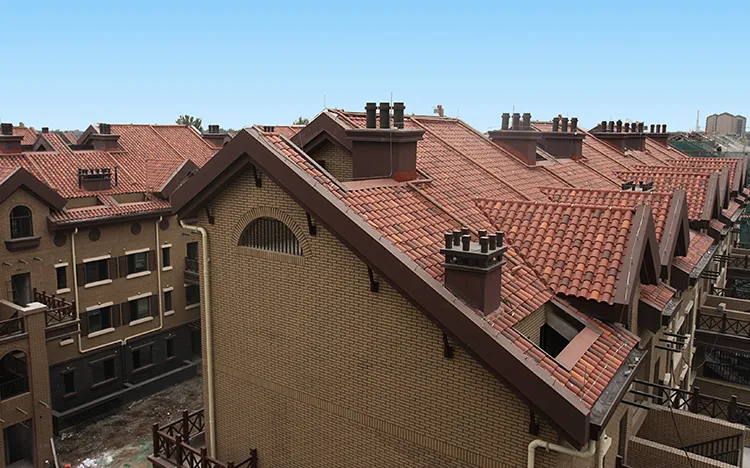Spanish clay roof tiles are popular around the world for their unique beauty and durability. However, the successful installation of clay tiles depends not only on the tiles themselves, but also on the foundation layer laid under the tiles. Proper foundation laying not only prolongs the life of the roof, but also improves the waterproof, windproof and thermal insulation performance of the entire building.
This article will explore in detail the various layers that need to be laid underneath when installing Spanish clay roof tiles and explain the importance of each layer.

Roof structure foundation layer
1. Frame structure:
Before installing any type of roof tiles, a solid frame structure is first required. Usually, this frame is made of wood or metal. The main function of the frame structure is to support the entire roof system, including tiles and all underlying materials. A solid frame is the foundation to ensure the long-term stability and security of the roof.
2. Roofing board:
On the frame, a layer of roofing board (Sheathing) is usually laid, which is usually made of plywood, oriented strand board (OSB) or other structural board materials. The roofing sheet provides a flat surface for the tiles and adds rigidity to the entire roof system. It also helps distribute the weight of the tiles and other external forces, such as wind and snow pressure.
Waterproof layer
1. Waterproof membrane:
On top of the roofing sheet, laying a waterproof membrane (Underlayment) is a very critical step. This waterproof membrane is usually made of organic felt paper or synthetic materials impregnated with asphalt. The main function of the waterproof membrane is to prevent moisture from penetrating into the roofing sheet and roof structure. Even if the tiles themselves have good waterproof performance, water penetration is still possible due to the overlapping method and wind and rain attack. The waterproof membrane provides an additional line of defense.
2. Ice and Water Shield:
In cold climates, especially in areas that are susceptible to ice and snow, such as eaves and valley lines (where the two slopes of the roof meet), an ice and water barrier (Ice and Water Shield) is also laid. This material is self-adhesive and can adhere tightly to the roofing sheet to prevent water formed after melting ice and snow from seeping into the house.
Ventilation layer
1. Roof ventilation:
A good roof ventilation system helps regulate the temperature and humidity under the roof, thereby extending the life of the roof. The ventilation layer usually includes roof vents, eaves vents and ridge vents. These ventilation facilities can effectively exhaust hot air and moisture, prevent mold growth and structural damage.

Roof covering layer
1. Roofing felt:
Between the waterproof layer and the clay tile, a layer of roofing felt, which is a fiber material impregnated with asphalt, is usually laid. This layer of material not only increases waterproofness, but also provides a flat surface to ensure the flatness of the clay tile installation.
2. Insulation board:
In some cases, especially in hot climates, in order to improve the thermal insulation performance of the roof, a layer of insulation board can also be laid on top of the roofing felt. The insulation board is usually made of polystyrene or polyurethane materials, which can effectively reduce the heat transfer from the roof to the interior and improve the energy efficiency of the building.
Clay tile installation
1. Tile fixing:
The installation of clay tiles usually uses nails or hooks to fix the tiles to the roof structure. The fixing method depends on the type and design of the tile, as well as the local climatic conditions. In areas with strong winds, additional fixing measures may be required, such as using longer nails or adding fixing points to the tiles to prevent the tiles from being blown away by strong winds.
2. Overlapping method:
Clay tiles are usually installed in an overlapping manner, which not only improves the waterproof performance of the tiles, but also increases the aesthetics of the roof. The overlapping part of the tile should cover the nail holes and seams of the lower layer of tiles to ensure that each tile is tightly connected without leaving any gaps.

Edge and detail treatment
1. Eaves and gables:
Special edge tiles or metal plates are usually used for edge sealing at the edges such as eaves and gables. These edge treatments not only increase the aesthetics of the roof, but also prevent moisture from seeping into the house from the edges.
2. Valley and ridge tiles:
Special valley tiles and ridge tiles are usually used at the valley and ridge lines of the roof. These tiles are specially designed to effectively drain water and provide additional waterproof protection. Valley and ridge tiles require special care to ensure there are no gaps between tiles to prevent moisture from seeping in.
Final Inspection and Maintenance
1. Installation Inspection:
After all tiles and edge treatments are completed, it is very important to conduct a comprehensive installation inspection. The inspection should include the fixing of tiles, the integrity of the waterproof layer, and the details of the edge treatment. Make sure that all tiles are properly installed and there are no loose or cracked tiles.
2. Regular Maintenance:
Clay tile roofs require regular maintenance to extend their service life. Regularly inspect and clean the roof to remove accumulated leaves and debris to prevent moisture accumulation and moss growth. At the same time, repair broken tiles and loose fixings in time to prevent small problems from turning into major damage.

Foshan Rongguan is a trusted manufacturer and supplier in the building materials industry, offering a wide variety of quartz countertops, artificial stone, and terrazzo floors. Spanning over 300,000 square meters, our factory combines innovation with efficient production. Buyers enjoy discount prices and wholesale deals on all products. Contact us to explore our catalog and request customized quotes for your bulk purchasing needs.

